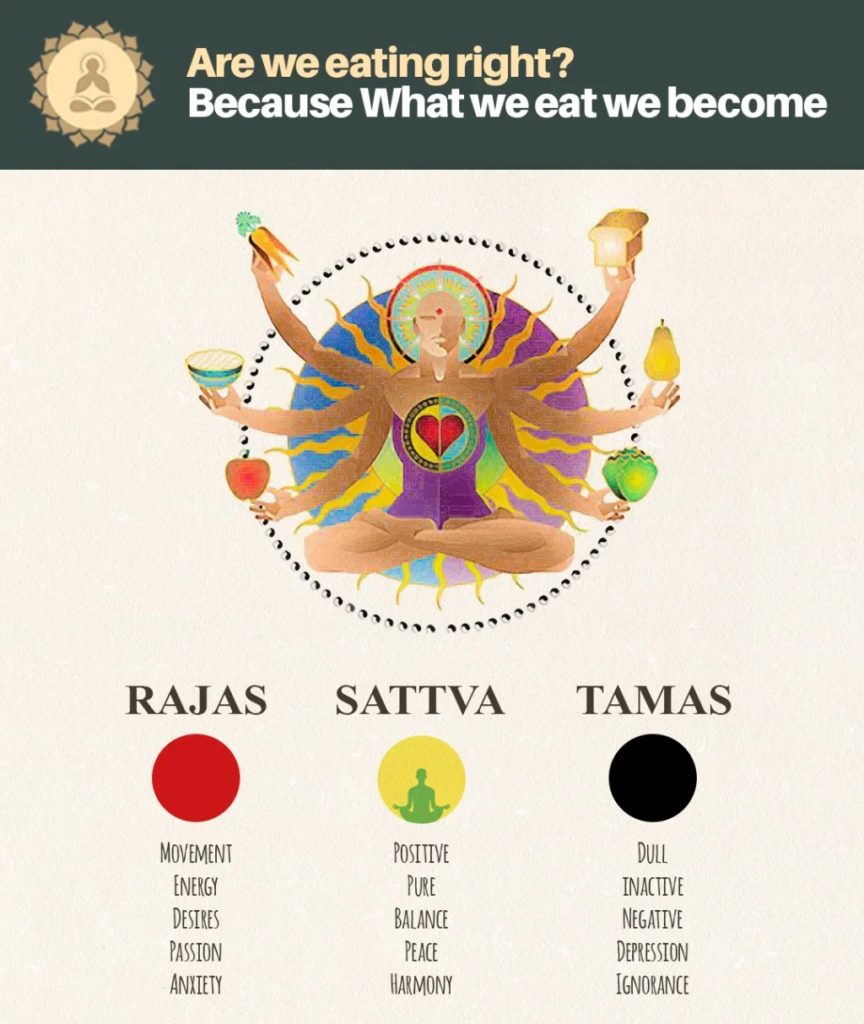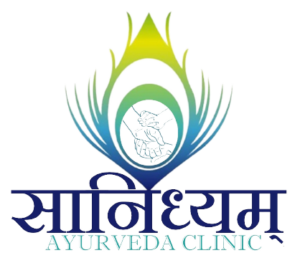What To Eat And When To Eat: An Ayurvedic Perspective
A Note From Vaidya Riya:
Fuel To The Car
Fodder To The Flower
The Creator Of Our Body Is Solely AHARA

Kya khaoon? Kitna khana theek hai? Bohot bhookh lag rahi hai! Bilkul bhookh nahi lag rahi! These are common statements we often hear and even say. Food is something we constantly think about, yet sometimes we don’t pay enough attention to what and how we eat. Understanding what suits us best and in what quantity is essential for our well-being.
Indian traditions, particularly the science of Ayurveda, have long emphasised the importance of food. Sacred texts like the Bhagavad Gita and various Ayurvedic scriptures provide detailed guidance on the types of food suitable for different body types and work profiles.
Types Of Food According To The Bhagavad Gita

The Bhagavad Gita Classifies Food Into Three Categories Based On The Nature Of Work And Lifestyle:
Satvik: Pure, Nourishing, And Easily Digestible Foods.
Rajsik: Stimulating And Energetic Foods.
Tamsik: Heavy, Dull, And Sometimes Harmful Foods.
Neither vegetarian nor non-vegetarian diets are deemed wrong, provided they are consumed in the right manner, at the right time, and by the right individuals.
The Ayurvedic Perspective: Doshas And Prakritis

Ayurveda identifies three doshas (Vata, Pitta, Kapha) that form the prakritis (natural constitutions) and can lead to vikritis (imbalances) if not managed properly. Your diet should be tailored to your specific dosha to maintain balance and health.
Vata Dosha
Elements: Ether And Air
Qualities: Movement, Nerve Impulses, Respiration, Circulation, Digestion, And Creativity.
Recommended Foods: Warm, Slightly Spicy, Moist, And Grounding Foods.
Examples Of Vata-Pacifying Foods:
- Fruits: Ripe bananas, apples, pineapples, figs, melons, kiwis, raisins, oranges, papayas, berries, cherries, and coconuts.
- Vegetables: Cooked spinach, fennel, carrots, garlic, sprouts, onions, beetroot, sweet potatoes, tomatoes.
- Grains: Brown rice, wheat, boiled oats, wheat bread, rice.
- Others: Jaggery, brown sugar, clarified butter, fresh milk, paneer, tofu, cinnamon, ginger, garlic, cloves, and cardamom.
Pitta Dosha
Elements: Fire And Water
Qualities: Metabolism, Body Temperature, Hunger, Intelligence, And Hormonal Function.
Recommended Foods: Internally Cooling, Astringent, And Mild Foods.
Examples Of Pitta-Pacifying Foods:
- Fruits: Sweet fruits like apples, coconuts, melons, oranges, dates, figs, grapes, sweet cherries and berries, mangoes, pomegranates, plums, and raisins.
- Vegetables: Sweet or bitter vegetables such as cabbage, cucumber, potatoes, mushrooms, asparagus, lettuce, cauliflower, green beans, and peas.
- Grains: Barley, cooked oats, wheat, and rice.
- Others: Brown sugar, honey, cilantro, turmeric, fennel, black pepper, cardamom, goat or cow milk, cheese, clarified butter, and unsalted butter.
Foods To Avoid For Pitta:
- Sour fruits
- Pungent vegetables like radish, eggplants, mustard, olives, and turnips
- Dry oats, yeast bread, millet
- Salted butter, hard cheese, yogurt, sour cream, and soy
Kapha Dosha
Elements: Earth and Water
Qualities: Heaviness, Slowness, Stability, Softness, Density, And Cold.
Recommended Foods: Drying, light, warm foods.
Examples of Kapha-Pacifying Foods:
- Fruits: Apples, cherries, mangoes, berries, pears, raisins, dried figs, plums, and peaches.
- Vegetables: Spicy and bitter vegetables including cabbage, carrots, eggplants, mushrooms, onions, spinach, Brussels sprouts, celery, garlic, peas, fennel, and cauliflower.
- Grains: Barley, millet, oats, and corn in moderation.
- Others: All legumes except white beans and lentils, all spices.
Foods to Avoid for Kapha:
White Sugar, Yoghour, Cheese, All Fatty foods
Ideal Food Qualities in Ayurveda

Ayurveda advises on certain principles for food intake to ensure health and balance:
- Timely Eating (Kale Bhojana): Eat at regular intervals.
- Suitability (Satmya Bhojana): Choose foods that suit your body type.
- Prakruti-Specific Diet (Hita Bhojan): Tailor your diet to your natural constitution.
- Proper Hygiene (Suchi Bhojan):Maintain cleanliness.
- Unctuous Food (Snigdha Bhojan):Include moist and nourishing foods.
- Warm Food (Ushna Bhojan): Prefer warm meals.
- Easy to Digest (Laghu Bhojan): Choose easily digestible foods.
- Mindful Eating (Tan Mana Bhojana): Focus on your food while eating.
- Six Tastes (Sad-Rasayukta Ahara): Include all six tastes in your diet.
- Sweet Nature (Madhura Praya):Favour sweet-tasting foods.
- Calm Ingestion (Na Ati Druta Vilambita): Eat calmly and at a moderate pace.
- After Bathing (Snatah):Eat after bathing.
- When Hungry (Kshudvan): Eat only when hungry.
- Clean Hands and Face (Dhauta Pada-Kara-Anana): Wash hands, feet, and face before eating.
- .Offer Prayers (Pithru-Deva Tarpana): Offer food to gods and forefathers before eating.
- Share Food (Athithi-Balakaguru Tarpana): Offer food to guests, teachers, and children.
- Respect Food (Anindan Bhunjaana) Never disgrace food.
- Silently Eat (Moun): Eat in silence.
By making small changes to our eating habits and following these Ayurvedic principles, we can achieve significant improvements in our health and well-being. Understanding what to eat and when to eat is crucial for a balanced and healthy life.

